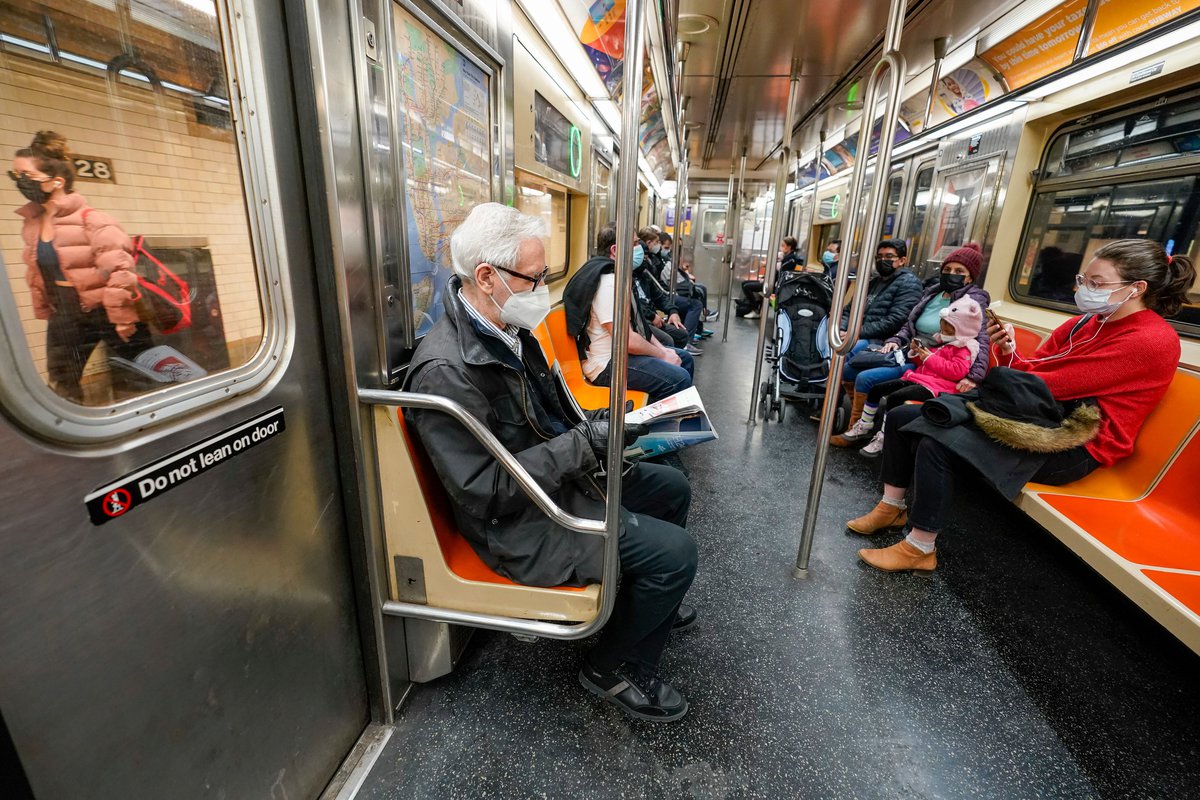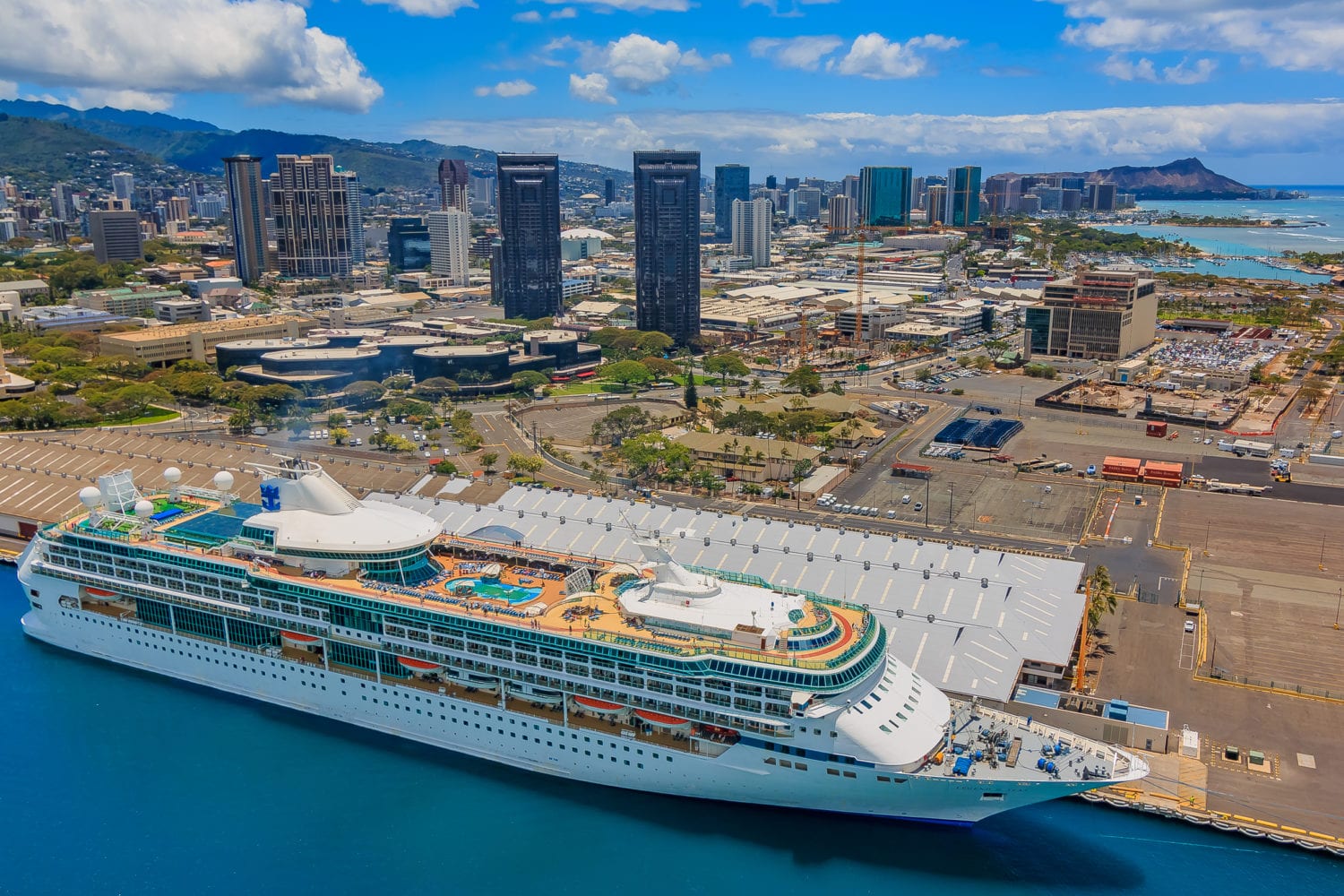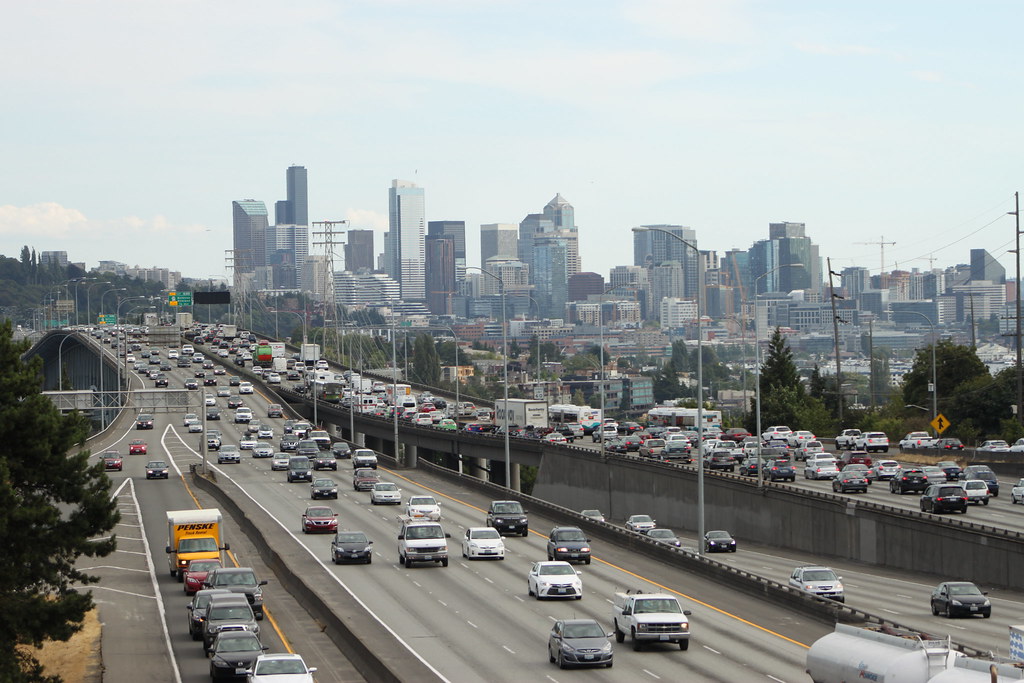More New Yorkers Ignoring Subway and Bus Mask Mandate as Riders, Experts Debate Value

Mask compliance among subway and bus riders has sunk to its lowest level since early in the pandemic, the MTA’s most recent figures show, as commuters increasingly ignore the transit agency’s mandate to cover up amid mixed messages all around.
Just 64% of subway riders covered their faces correctly between April 4-15 — the lowest percentage during a two-week interval since the MTA began tracking mask-compliance rates in the summer of 2020.
While more than three in four riders wore masks in the subway during that period, the figures reflect a significant dropoff from January, when there was near-universal compliance while the omicron variant caused COVID cases to surge.
On buses, 67% of riders wore masks properly, MTA data shows, down from a high of 90% in April 2021.
The dropoff in mask usage in the transit system came ahead of the city last week entering what health officials called “high COVID alert” with increased levels of transmission of the virus.
But even as Mayor Eric Adams has pushed back against reinstating a citywide mask mandate, one remains in effect on trains and buses, where ridership has returned to about 60% of pre-pandemic levels, according to MTA data. And a federal judge in Florida last month ended the federal mask mandate for airplanes and mass transit.
The result has been confusion among commuters.
“Like what are we doing, are we wearing it, are we not?” said Hank Jones, 30, as he waited for a No. 4 train Monday at the Bowling Green station in Lower Manhattan. “We’re all trying to figure out the best way to move forward at this point.”
Masking on public transportation “is sort of a barometer for whether people are willing to continue masking and, unfortunately, we are in a place where people’s sense of the risk does not match up with what the true levels of community transmission are right now,” said Céline Gounder, an infectious disease expert and editor-at-large for public health at the Kaiser Family Foundation.
Since each state and local government makes their own public health policy decisions, Gounder said, it results in “patchwork of masking requirements” and ends up being “very confusing to people and rightfully so, because the risks may actually be comparable in these different settings, but because of who has power or authority or jurisdiction, the rules may not be the same.”
New York City reported a seven-day average of 49.4 cases per 100,000 people on May 21, nearly twice the rate from a month ago, with hospitalizations almost doubling in the same period.
Bruce Y. Lee, a professor of health policy at the CUNY Graduate School of Public Health, said that mask mandates have been “politicized” to a point where the scientific benefits are ignored in favor of political gains.
“Unless masks are required, chances are low that everyone will follow the recommendations and suggestions,” Lee said, noting that the rise in cases followed the lifting of COVID-19 precautions in early March.
“Mask mandate only in transit is not enough. Yes, it helps people who must or have no choice but to take public transit to feel safe,” he added. “But we still need other precautions in other places. Otherwise, you will continue to have a lot of people carrying the virus around.”
Research that has emerged since the beginning of the pandemic shows that there is no inflated risk of virus transmission on public transportation because of the rapid exchange and replacement of air by their ventilation systems. But experts still advise masking up in large gatherings and indoor settings, which would include inside crowded subway cars, particularly during rush hours.
According to Vivian Faye McNeill, a Columbia University professor whose research focuses on atmospheric aerosol particles, the quick replacement of air won’t entirely eliminate the transmission of the virus and there are times when all ducts in subway cars won’t be functioning properly.
“Theoretically, the ventilation rate in the subway is quite high. Even if the air is being kind of moved and cleaned and replaced, pretty frequently, it’s still being quite mixed up,” said McNeill, who has specifically focused on studying ventilation systems during the pandemic.
“There should be no confusion that COVID rates are higher and that we should, as riders and New Yorkers, do everything we can to protect ourselves and masks have shown to do that,” said Lisa Daglian, executive director of the Permanent Citizens Advisory Committee to the MTA.
“Wearing masks on transit in New York is also the law, however, wearing masks in New Jersey is not the law and wearing masks in Connecticut does not seem to be the law,” she added, pointing out the different rules a tri-state commuter might have to navigate.
“So there is confusion.”
Masked and Answered
Former governor Andrew Cuomo put the public transportation mask mandate in effect in April 2020, during the peak of the first wave of the pandemic. In September 2020, NYPD and MTA Police officers were cleared to issue $50 fines to commuters who didn’t cover up on trains, buses or in underground stations.
Officers can ask riders to adjust their masks to wear them properly, hand out face coverings or issue $50 summonses.
MTA Police data provided to THE CITY shows the transit agency’s own officers have, from September 2020 through Sunday, asked for riders to cover their mouths and noses more than 50,500 times, while distributing nearly 80,000 masks and issuing 76 summonses.
While more than 3,000 riders have exited the system due to not wearing a mask since September 2020 when the MTA began to keep a record of its enforcement, MTA Police officers have not issued a single $50 summons in 2022 — the last one was in December, when three were handed out on a single day.
Transit agency numbers reviewed by THE CITY show MTA Police officers have largely moved away from a tactic in which they ask riders to wear a mask or adjust one to properly cover their nose and face. According to the data, so-called verbal compliance with these asks is down 78% since December 2021, while mask distribution has virtually disappeared.
Prior to that, a summons had not been issued since October 1, when MTA police were still on a “Mask Blitz” brought on by a report by THE CITY that highlighted how officers had not issued a single mask summons in August 2021.
The overall effect of the mandate is unclear, however, as the NYPD did not provide data on how often its officers have asked riders to cover up or issued summonses.
“We find that almost every time we encounter someone who isn’t wearing a mask, when we ask them to put one on, they comply,” an NYPD spokesperson told THE CITY in a statement. “We’re focused on the end result, compliance with the mask mandate — and this has been a very effective approach.”
Gov. Kathy Hochul last month said the mask mandate in the subway and on trains and buses would be in place “just a little bit longer,” citing how strangers ride together with no idea if fellow commuters are vaccinated or immunocompromised.
Riders said they have, in recent weeks, noticed a sharp drop-off in mask usage in the transit system since the change to federal guidelines.
“It’s confusing, because it’s one thing in the subway, and another when you’re not in the subway,” said Pedro Rosario, 79, who was waiting on a No. 4 train at Fulton Street.
And some don’t appear to be aware of the continued mandate.
“It’s up to you if you want to stop wearing it,” said Dejahne Millings, 19, of Brooklyn, who covered her nose and face with a KN-95 mask while waiting for an A train. “But for my safety, I will continue wearing it.”
MTA Chairman and CEO Janno Lieber last month said mask compliance “is not a huge drama on our mass transit system.”
Safety in the subway has been at the forefront of rider concerns, with assaults on the rise and multiple shootings in stations and on trains. The latest fatal shooting came Sunday morning, when Daniel Enriquez, 48, was the victim of what police described as an unprovoked shooting on a Q train.
“For so many New Yorkers, the transit system is the only way to get around and to live their normal lives,” Lieber said Monday. “You can’t do that if you’re scared to get up and go to brunch, that most New York of activities on a Sunday morning, for fear of being attacked.”
Police on Monday released photos of a man who is being sought in the shooting aboard the train as it entered the Canal Street stop.
In the photos, the man’s face is concealed by a mask.
This article was originally posted on More New Yorkers Ignoring Subway and Bus Mask Mandate as Riders, Experts Debate Value



